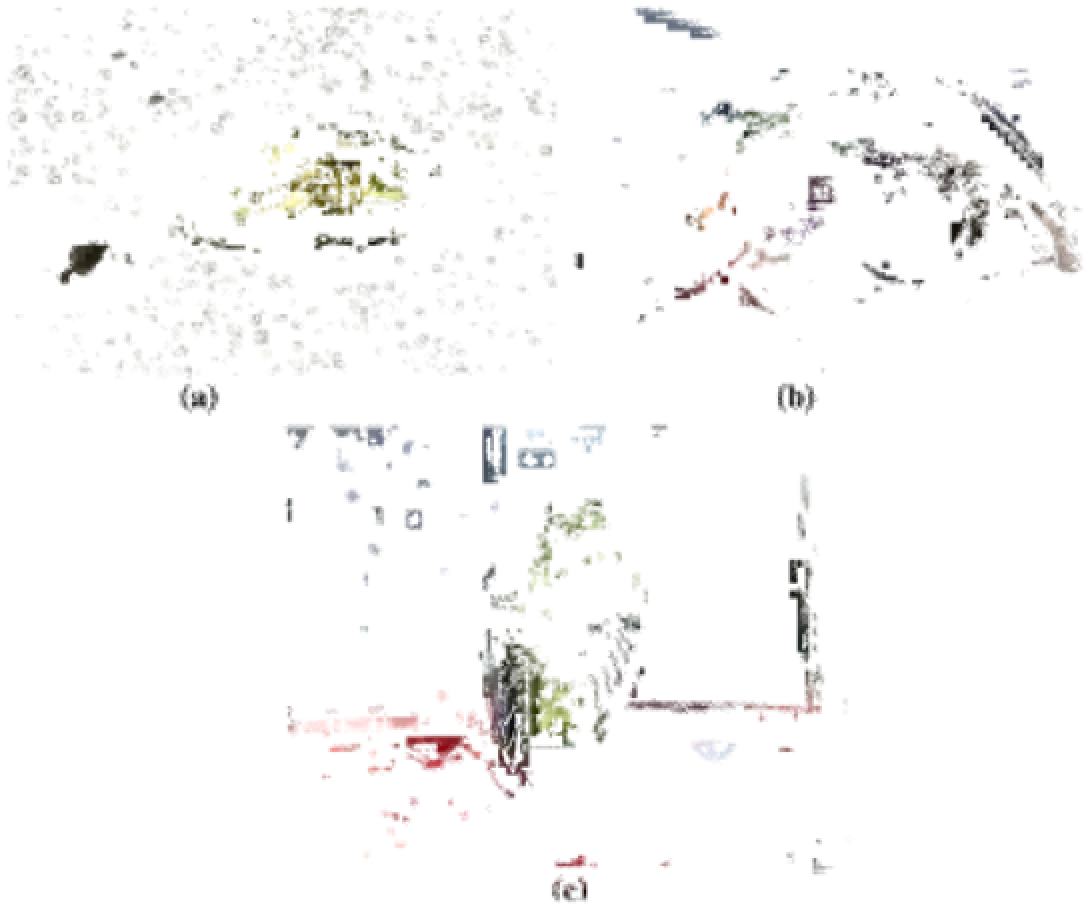Biomedical Engineering Reference
In-Depth Information
FIGURE 11.2
(a) Fragment of an elytron of
Lamprocyphus augustus
. (b) The head of a male wood duck (
Aix Spousa
)
displays both pigmental and structural colors. Courtesy of Joseph Grosh (Millersville University, USA). (c) The back of
Anna's Hummingbird (
Calypte Anna
). Courtesy of Joseph Grosh (Millersville University, USA). (For interpretation of the
references to color in this igure legend, the reader is referred to the web version of this topic.)
11.2 A BRIEF HISTORY OF
RESEARCH
interference from the thin transparent part of the
feathers. About 200 years later, the emergence
of the Maxwell equations provided a theoreti-
cal foundation to investigate structural colors.
The brilliant colors of hummingbirds, but-
terflies, and beetles were intensively studied
thereafter.
Until about 20 years ago, research on struc-
tural colors was motivated chiefly by the need
Perhaps the first description of structural colors
was given by Isaac Newton
[13]
. In the second
topic of
Opticks
, he explained the brilliant plum-
age of the common Indian peafowl (
Pavo crista-
tus
), shown in
Figure 11.3
, as rising from optical




